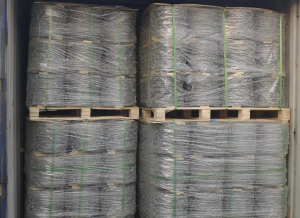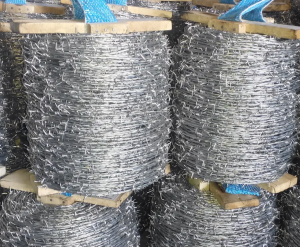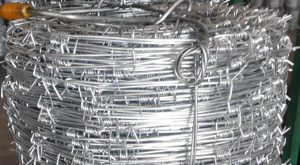RECENT POSTS
Share:
- April 15, 2024
Table of Contents
Choose different types of barbed wire to meet different needs
Fencing stands as a prevalent choice for safeguarding the perimeters of any location, be it a business establishment or a specific entity. Given the varying nature of applications, an assortment of fences is deployed, with corresponding materials utilized accordingly. However, barbed wire emerges as a favored option owing to its manifold advantages.
Advantages of Barbed Wire
Here are a few advantages of Barbed Wire:
- Enhanced Security: Barbed wire is highly favored for its ability to provide heightened protection compared to conventional fences. Crafted to deter intruders and predators effectively, it inflicts serious cuts or injuries upon any individual making contact. This visible deterrent serves as a formidable barrier, deterring trespassers from approaching security installations or restricted perimeters.
- It is also used sometimes in animal enclosures and chicken coups: While it keeps the animals inside the enclosure, it also protects them from external predators as any animal trying to climb, or sneak through the fence would either get injured or wouldn’t come close to it.
- Barbed wire is also effective while being highly economical: It offers an economic benefit over other alternatives such as concrete walls or metallic sheets, while still offering considerable protection. It is also quite easy to install, and can easily be shifted from one place to another.
Types of Barbed Wire
Barbed wire comes in different forms. Here are a few types of barbed wire available.
 Conventional Twist Barbed Wire
Conventional Twist Barbed Wire
It is also known as traditional barbed wire and is the most common type we see used in fencing. It comprises two twisted galvanized wire strands, in the same direction, and has 4 barbs at even intervals. It is also coated with an additional Zinc coating layer to make It durable and prevent it from rusting and deteriorating, especially in humid and moist climates.
 Reverse Twist Barbed Wire
Reverse Twist Barbed Wire
Just like conventional barbed wire, it is also made up of two strands of galvanized wire. However, these strands twist in opposite directions for added strength. 4 barbs are installed at even intervals. It is ideal for securing a certain area.
 Single Strand Barbed Wire
Single Strand Barbed Wire
Differing from its counterparts, this specific type of barbed wire consists of a single strand of steel that remains untwisted, featuring evenly spaced barbs at consistent intervals. This unique design enhances its flexibility and simplifies the installation process, making it notably easier compared to alternative variants. Primarily suited for fencing animal farms and delineating land boundaries, this wire stands as an ideal choice for such applications.
Since barbed wire is very important and widely used, businesses need reliable manufacturers to get the best quality and durable barbed wire to gain good profits and customer trust. Suppliers offer high-quality barbed wire with the added benefits of being rust-resistant, and galvanized, adding durability and strength.
0


